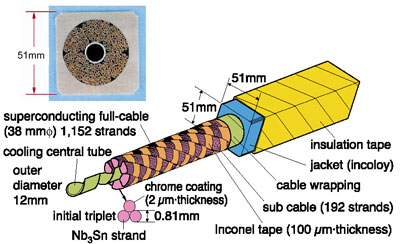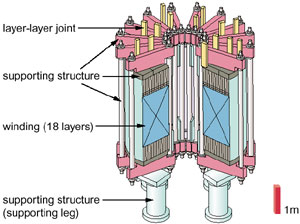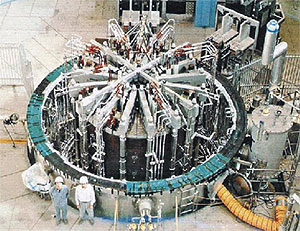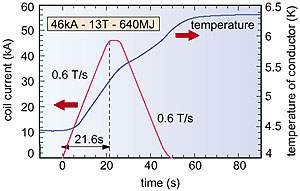The Central Solenoid (CS) is located in the center of the ITER (International Thermonuclear Experimental Reactor) to induce plasma current. The CS needs to be made with superconductor to realize long time burning and low cost power operation. However, a central solenoid (CS), which is operated with a high ramp rate, has never been made with superconductor before, being different from toroidal field (TF) coils which have already been made with superconductor. Therefore, the CS model coil project has been established to make a CS with superconductor under the international collaboration started in the engineering design activity of the ITER project. The most important issue of the CS development is that a superconducting coil causes heat generation (so-called ac loss) due to eddy currents induced in its conductor during operation with high ramp rate, and this may be sufficient for it to pass from the superconducting state to the normal state. In order to reduce the ac loss, the following conductor has been developed: 1182 Nb3Sn superconducting strands whose diameter of 0.8 mm coated with chrome coating. They are divided into six cables which are wrapped with Inconel tapes of high electric resistive. The cables are wrapped around a cooling central tube of 12 mm diameter and are inserted into a Incoloy conduit (Fig. 3-13). This conductor was insulated and wound as a solenoid winding. Finally the CS model coil which consists of 18 layers, has been completed (Fig. 3-14). The test of the CS model coil has been carried at JAERI (Fig. 3-16) and successfully operated up to 13 T (corresponding to the operating current of 46 kA and magnetic stored energy of 640 MJ) in 21 s (Fig. 3-16). This shows that the feasibility of the ITER CS construction has been demonstrated.
This project was efficiently achieved because Japan, the US, the EU and Russia contributed their respective strengths toward overcoming the difficult subjects. And also it was a rehearsal for the international collaboration required for ITER construction. |




